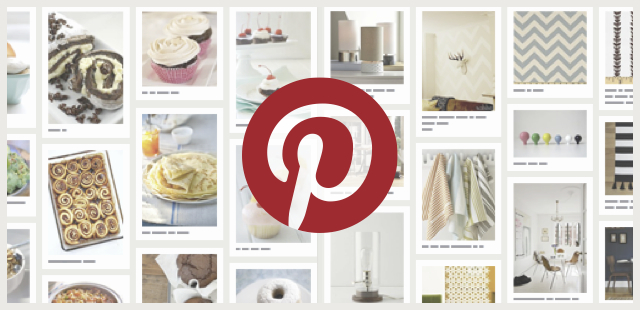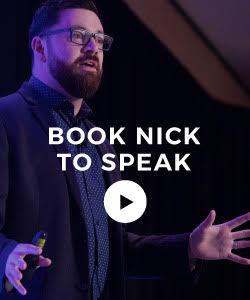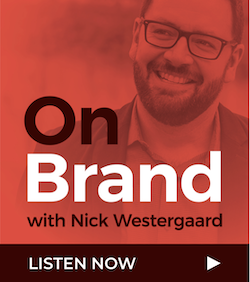Chances are Pinterest has come up in a conversation recently. Perhaps it was the source of a recipe from a family gathering. Or maybe it was responsible for a friend’s new interior design. Or maybe you’re a marketer who’s heard all of this and is wondering — how does Pinterest work? Why does it matter for brands and how do you know if it’s a good fit for your business?
Simply put, Pinterest is a visually engaging social bookmarking system. Users, called ‘pinners,’ create ‘boards’ based on topics that they ‘pin’ things of interest to (pins + interest — get it?). Social bookmarking is not a new thing by any stretch. Services like Digg, Del.icio.us, and Reddit have been at it for years but Pinterest has reinvented this medium by making it appealing and approachable for those outside the digerati.
These appealing efforts have paid off, as comScore reports that Pinterest currently has 4 million users and is growing rapidly. In December 2011, it entered the top 10 social networks according to Hitwise data with a total of 11 million visits per week — 40 times the amount in the comparable six-month period before.
The approachability factor is evident in the user demographics with over 58% female (down from 70% prior) with a majority being between the ages of 25 and 44 years old. Also of note, users in the Midwest are up to 102% more likely to visit Pinterest than elsewhere. This stands in stark contrast to other networks, which are usually adopted on the coasts and work their way in.
Why Pinterest Matters
When you take a step back, it’s clear that Pinterest is answering a critical need in our digital lives. There’s too much information online. Last year Google’s Eric Schmidt revealed that every two days we create as much information as we did from the dawn of civilization up until 2003. In short, we need help getting through it all. That’s where Pinterest serves as a socially curated map to things we discover, like, and share online.
But solving this information overload in a graphically pleasing way is only part of the Pinterest equation. Behind all of those pins lies a rich warehouse filled with links and metadata. These may look like photos, videos, and links but amassed they become valuable customer insights.
This socially reinforced content joins Google+ in jarring the world of traditional search and altering how companies gain visibility online.
How Are Brands Using It?
Given this potential, it’s no surprise that many brands have already colonized on Pinterest, utilizing the network in various ways.
The Today Show ends in the morning but pins all day, mixing lifestyle references from on-air features (fitness, travel, etc.) with actual news (Gabrielle Giffords stepping down). The Weather Channel pins storm photos. Real Simple and Martha Stewart have boards aligned with their editorial calendars and product categories.
Whole Foods shares a mix of savory meals along with topics that highlight their customers’ ethos such as gardening. Nordstrom uses Pinterest to learn about customers and gain insight into trends and style. Greek yogurt Chobani finds a balance of content that celebrates their product and explores off-topic areas of interest.
Is Pinterest Right for Your Brand?
Most brands that find a good fit on Pinterest have either an obvious visual appeal that can be showcased or a strong ethos and culture that allow them to pin symbolic pictures that evoke key components of their brand’s DNA. Examples include:
- Lifestyle — Food, Travel, Sports, Pets
- Design Focused — Architecture, Interior design, Industrial design, Technology
- Event Driven — Weddings, Entertaining, Seasonal/Holidays
- Apparel — Men’s, Women’s, Kids; High Fashion to Sportswear; Accessories
- Media/Publishing — TV Shows, Magazines, Websites
For the right brands, the results can be impressive. Real Simple magazine, an ideal fit based on both visual appeal and audience demographics, has seen more recent website referrals from Pinterest than Facebook.
Before Your Brand Starts Pinning
If you think Pinterest might be a good fit for your brand, there are a few things you should be aware of.
- Pins can be photos (the most popular type), videos, discussions, or gifts. Of note, ‘gifts’ can be assigned a price.
- You can tag other users with the ‘@’ symbol like Twitter, Facebook, and Google+.
- Remember to include keywords in your pin descriptions for better SEO.
- While there are no rules about only following those who follow you, like Google+ brand pages, you should experiment with Pinterest as an opt-in platform and only follow others once they follow your business.
- Like all networks, watch your signal-to-noise ratio to ensure that you’re sharing more than you’re self-promoting.
- Encourage pinning by adding the easy-to-install buttons that Pinterest provides on your product pages or blog content (see mine at the end of this post). Like all networks, your results are greatly diminished if you don’t promote them.
- Pictures are literally worth more than words in a visual medium like Pinterest. As such you should create pin-ready photos that are nice and big.
To Pin or Not to Pin
Pinterest, Instagram, Google+ — oh my! As new social networks continue to crop up, many are feeling overwhelmed. As our online media becomes even more fractured, defining your social media strategy for each platform is key. Pinterest is certainly seeing exceptional growth especially in demographics not prone to early adoption. And if you’ve spent any time on the network you may have noted that once you start pining it can be addictive.
However, the brand applications for Pinterest are a little narrower. It’s not clear what B2B brands can do here or traditional sectors like manufacturing and healthcare. In short, you need to take a look at the network, play around a bit, follow others in your space, and determine if Pinterest is a good fit for your brand.
Curious about what I’m pinning on Pinterest?









